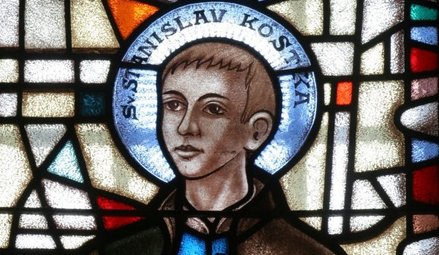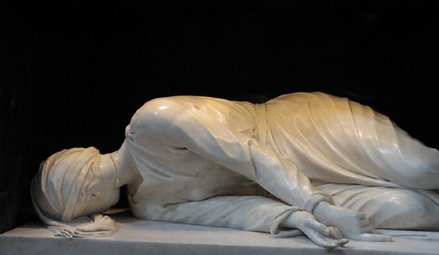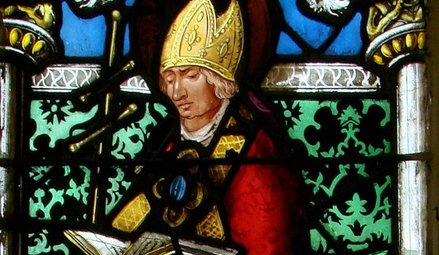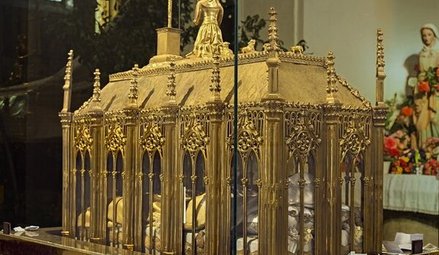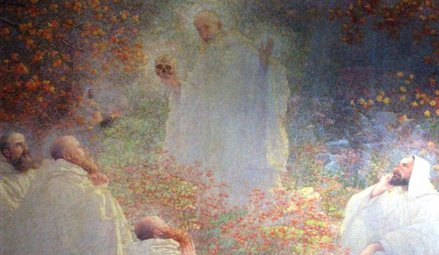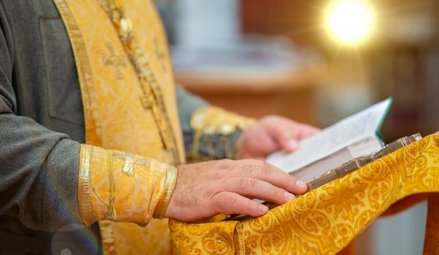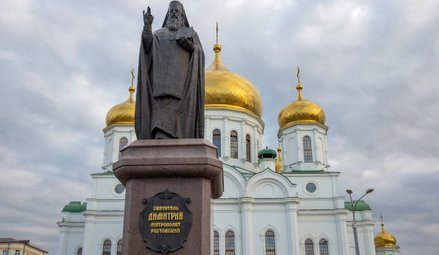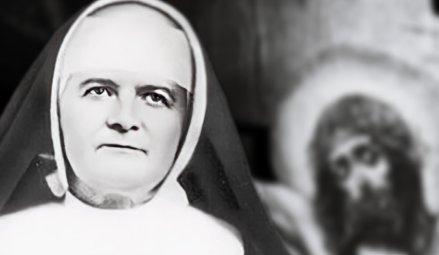- By theme
- Jesus
- The many proofs of Christ’s resurrection
- Saint Thomas Aquinas: God gave all the divine proofs we needed to believe
- The surpassing power of Christ's word
- Lewis’s trilemma: a proof of Jesus’s divinity
- God saves: the power of the holy name of Jesus
- Jesus spoke and acted as God's equal
- Jesus' divinity is actually implied in the Koran
- Jesus came at the perfect time of history
- Rabbinical sources testify to Jesus' miracles
- Mary
- The Church
- The Bible
- An enduring prophecy and a series of miraculous events preventing the reconstruction of the Temple
- The authors of the Gospels were either eyewitnesses or close contacts of those eyewitnesses
- Onomastics support the historical reliability of the Gospels
- The New Testament was not altered
- The New Testament is the best-attested manuscript of Antiquity
- The Gospels were written too early after the facts to be legends
- Archaeological finds confirm the reliability of the New Testament
- The criterion of embarrassment proves that the Gospels tell the truth
- The dissimilarity criterion strengthens the case for the historical reliability of the Gospels
- 84 details in Acts verified by historical and archaeological sources
- The unique prophecies that announced the Messiah
- The time of the coming of the Messiah was accurately prophesied
- The prophet Isaiah's ultra accurate description of the Messiah's sufferings
- Daniel's "Son of Man" is a portrait of Christ
- The Apostles
- Saint Peter, prince of the apostles
- Saint John the Apostle: an Evangelist and Theologian who deserves to be better known (d. 100)
- Saint Matthew, apostle, evangelist and martyr (d. 61)
- James the Just, “brother” of the Lord, apostle and martyr (d. 62 AD)
- Saint Matthias replaces Judas as an apostle (d. 63)
- The martyrs
- The protomartyr Saint Stephen (d. 31)
- Polycarp, bishop of Smyrna, disciple of John and martyr (d. 155)
- Justin Martyr: philosopher and apologist (d.165)
- Saint Blandina and the Martyrs of Lyon: the fortitude of faith (177 AD)
- Saint Agatha stops a volcano from destroying the city of Catania (d. 251)
- Saint Lucy of Syracuse, virgin and martyr for Christ (d. 304)
- Saint Boniface propagates Christianity in Germany (d. 754)
- Thomas More: “The king’s good servant, but God’s first”
- The martyrdom of Paul Miki and his companions (d. 1597)
- The martyrs of Angers and Avrillé (1794)
- The Martyrs of Compiègne (1794)
- The Vietnamese martyrs Father Andrew Dung-Lac and his 116 companions (17th-19th centuries)
- He braved torture to atone for his apostasy (d. 1818)
- Blaise Marmoiton: the epic journey of a missionary to New Caledonia (d. 1847)
- The Uganda martyrs: a recurring pattern in the persecution of Christians (1885)
- José Luis Sanchez del Rio, martyred at age 14 for Christ the King (d. 1928)
- Saint Maximilian Kolbe, Knight of the Immaculate (d. 1941)
- The monks
- The Desert Fathers (3rd century)
- Saint Anthony of the Desert, a father of monasticism (d. 356)
- Saint Benedict, father of Western monasticism (d. 550)
- Saint Bruno the Carthusian (d.1101): the miracle of a hidden life
- Blessed Angelo Agostini Mazzinghi: the Carmelite with flowers pouring from his mouth (d. 1438)
- Monk Abel of Valaam's accurate prophecies about Russia (d. 1841)
- The more than 33,000 miracles of Saint Charbel Maklouf (d. 1898)
- Saint Pio of Pietrelcina (d. 1968): How God worked wonders through "a poor brother who prays"
- The surprising death of Father Emmanuel de Floris (d. 1992)
- The prophecies of Saint Paisios of Mount Athos (d. 1994)
- The saints
- Saints Anne and Joachim, parents of the Virgin Mary (19 BC)
- Saint Nazarius, apostle and martyr (d. 68 or 70)
- Ignatius of Antioch: successor of the apostles and witness to the Gospel (d. 117)
- Saint Gregory the Miracle-Worker (d. 270)
- Saint Martin of Tours: patron saint of France, father of monasticism in Gaul, and the first great leader of Western monasticism (d. 397)
- Saint Augustine of Canterbury evangelises England (d. 604)
- Saint Lupus, the bishop who saved his city from the Huns (d. 623)
- Saint Rainerius of Pisa: from musician to merchant to saint (d. 1160)
- Saint Dominic of Guzman (d.1221): an athlete of the faith
- Saint Francis, the poor man of Assisi (d. 1226)
- Saint Anthony of Padua: "everyone’s saint"
- Saint Rose of Viterbo or How prayer can transform the world (d. 1252)
- Saint Simon Stock receives the scapular of Mount Carmel from the hands of the Virgin Mary
- The unusual boat of Saint Basil of Ryazan
- Saint Agnes of Montepulciano's complete God-confidence (d. 1317)
- The extraordinary conversion of Michelina of Pesaro
- Saint Peter Thomas (d. 1366): a steadfast trust in the Virgin Mary
- Saint Rita of Cascia: hoping against all hope
- Saint Catherine of Genoa and the Fire of God's love (d. 1510)
- Saint Anthony Mary Zaccaria, physician of bodies and souls (d. 1539)
- Saint Ignatius of Loyola (d. 1556): "For the greater glory of God"
- Brother Alphonsus Rodríguez, SJ: the "holy porter" (d. 1617)
- Martin de Porres returns to speed up his beatification (d. 1639)
- Virginia Centurione Bracelli: When God is the only goal, all difficulties are overcome (d.1651)
- Saint Marie of the Incarnation, "the Teresa of New France" (d.1672)
- St. Francis di Girolamo's gift of reading hearts and souls (d. 1716)
- Rosa Venerini: moving in the ocean of the Will of God (d. 1728)
- Saint Jeanne-Antide Thouret: heroic perseverance and courage (d. 1826)
- Seraphim of Sarov (1759-1833): the purpose of the Christian life is to acquire the Holy Spirit
- Camille de Soyécourt, filled with divine fortitude (d. 1849)
- Bernadette Soubirous, the shepherdess who saw the Virgin Mary (1858)
- Saint John Vianney (d. 1859): the global fame of a humble village priest
- Gabriel of Our Lady of Sorrows, the "Gardener of the Blessed Virgin" (d. 1862)
- Father Gerin, the holy priest of Grenoble (1863)
- Blessed Francisco Palau y Quer: a lover of the Church (d. 1872)
- Saints Louis and Zelie Martin, the parents of Saint Therese of Lisieux (d. 1894 and 1877)
- The supernatural maturity of Francisco Marto, “contemplative consoler of God” (d. 1919)
- Saint Faustina, apostle of the Divine Mercy (d. 1938)
- Brother Marcel Van (d.19659): a "star has risen in the East"
- Doctors
- The mystics
- Lutgardis of Tongeren and the devotion to the Sacred Heart
- Saint Angela of Foligno (d. 1309) and "Lady Poverty"
- Saint John of the Cross: mystic, reformer, poet, and universal psychologist (+1591)
- Blessed Anne of Jesus: a Carmelite nun with mystical gifts (d.1621)
- Catherine Daniélou: a mystical bride of Christ in Brittany
- Saint Margaret Mary sees the "Heart that so loved mankind"
- Jesus makes Maria Droste zu Vischering the messenger of his Divine Heart (d. 1899)
- Mother Yvonne-Aimée of Jesus' predictions concerning the Second World War (1922)
- Sister Josefa Menendez, apostle of divine mercy (d. 1923)
- Edith Royer (d. 1924) and the Sacred Heart Basilica of Montmartre
- Rozalia Celak, a mystic with a very special mission (d. 1944)
- Visionaries
- Saint Perpetua delivers her brother from Purgatory (203)
- María de Jesús de Ágreda, abbess and friend of the King of Spain
- Discovery of the Virgin Mary's house in Ephesus (1891)
- Sister Benigna Consolata: the "Little Secretary of Merciful Love" (d. 1916)
- Maria Valtorta's visions match data from the Israel Meteorological Service (1943)
- Berthe Petit's prophecies about the two world wars (d. 1943)
- Maria Valtorta saw only one pyramid at Giza in her visions... and she was right! (1944)
- The location of Saint Peter's village seen in a vision before its archaeological discovery (1945)
- The 700 extraordinary visions of the Gospel received by Maria Valtorta (d. 1961)
- The amazing geological accuracy of Maria Valtorta's writings (d. 1961)
- Maria Valtorta's astronomic observations consistent with her dating system
- Discovery of an ancient princely house in Jerusalem, previously revealed to a mystic (d. 1961)
- Mariette Kerbage, the seer of Aleppo (1982)
- The 20,000 icons of Mariette Kerbage (2002)
- The popes
- The great witnesses of the faith
- Saint Augustine's conversion: "Why not this very hour make an end to my uncleanness?" (386)
- Thomas Cajetan (d. 1534): a life in service of the truth
- Madame Acarie, "the servant of the servants of God" (d. 1618)
- Blaise Pascal (d.1662): Biblical prophecies are evidence
- Madame Élisabeth and the sweet smell of virtue (d. 1794)
- Jacinta, 10, offers her suffering to save souls from hell (d. 1920)
- Father Jean-Édouard Lamy: "another Curé of Ars" (d. 1931)
- Christian civilisation
- The depth of Christian spirituality
- John of the Cross' Path to perfect union with God based on his own experience
- The dogma of the Trinity: an increasingly better understood truth
- The incoherent arguments against Christianity
- The "New Pentecost": modern day, spectacular outpouring of the Holy Spirit
- The Christian faith explains the diversity of religions
- Cardinal Pierre de Bérulle (d.1629) on the mystery of the Incarnation
- Christ's interventions in history
- Marian apparitions and interventions
- The Life-giving Font of Constantinople
- Apparition of Our Lady of La Treille in northern France: prophecy and healings (600)
- Our Lady of Virtues saves the city of Rennes in Bretagne (1357)
- Mary stops the plague epidemic at Mount Berico (1426)
- Our Lady of Miracles heals a paralytic in Saronno (1460)
- Cotignac: the first apparitions of the Modern Era (1519)
- Savona: supernatural origin of the devotion to Our Lady of Mercy (1536)
- The Virgin Mary delivers besieged Christians in Cusco, Peru
- The victory of Lepanto and the feast of Our Lady of the Rosary (1571)
- The apparitions to Brother Fiacre (1637)
- The “aldermen's vow”, or the Marian devotion of the people of Lyon (1643)
- Our Lady of Nazareth in Plancoët, Brittany (1644)
- Our Lady of Laghet (1652)
- Saint Joseph’s apparitions in Cotignac, France (1660)
- Heaven confides in a shepherdess of Le Laus (1664-1718)
- Zeitoun, a two-year miracle (1968-1970)
- The Holy Name of Mary and the major victory of Vienna (1683)
- Heaven and earth meet in Colombia: the Las Lajas shrine (1754)
- The five Marian apparitions that traced an "M" over France, and its new pilgrimage route
- A series of Marian apparitions and prophetic messages in Ukraine since the 19th century (1806)
- "Consecrate your parish to the Immaculate Heart of Mary" (1836)
- At La Salette, Mary wept in front of the shepherds (1846)
- Our Lady of Champion, Wisconsin: the first and only approved apparition of Mary in the US (1859)
- Gietrzwald apparitions: heavenly help to a persecuted minority
- The silent apparition of Knock Mhuire in Ireland (1879)
- Mary "Abandoned Mother" appears in a working-class district of Lyon, France (1882)
- The thirty-three apparitions of the Virgin Mary in Beauraing (1932)
- "Our Lady of the Poor" appears eight times in Banneux (1933)
- Fontanelle-Montichiari apparitions of Our Lady "Rosa Mystica" (1947)
- Mary responds to the Vows of the Polish Nation (1956)
- Zeitoun apparitions
- The Virgin Mary comes to France's rescue by appearing at L'Ile Bouchard (1947)
- Maria Esperanza Bianchini and Mary, Mary, Reconciler of Peoples and Nations (1976)
- Luz Amparo and the El Escorial apparitions
- The extraordinary apparitions of Medjugorje and their worldwide impact
- The Virgin Mary prophesied the 1994 Rwandan genocide (1981)
- Our Lady of Soufanieh's apparition and messages to Myrna Nazzour (1982)
- The Virgin Mary heals a teenager, then appears to him dozens of times (1986)
- Seuca, Romania: apparitions and pleas of the Virgin Mary, "Queen of Light" (1995)
- Angels and their manifestations
- Mont Saint-Michel: Heaven watching over France
- The revelation of the hymn Axion Estin by the Archangel Gabriel (982)
- Angels give a supernatural belt to the chaste Thomas Aquinas (1243)
- The constant presence of demons and angels in the life of St Frances of Rome (d. 1440)
- Mother Yvonne-Aimée escapes from prison with the help of an angel (1943)
- Saved by Angels: The Miracle on Highway 6 (2008)
- Exorcisms in the name of Christ
- A wave of charity unique in the world
- Saint Peter Nolasco: a life dedicated to ransoming enslaved Christians (d. 1245)
- Rita of Cascia forgives her husband's murderer (1404)
- Saint Angela Merici: Christ came to serve, not to be served (d. 1540)
- Saint John of God: a life dedicated to the care of the poor, sick and those with mental disorders (d. 1550)
- Saint Camillus de Lellis, reformer of hospital care (c. 1560)
- Blessed Alix Le Clerc, encouraged by the Virgin Mary to found schools (d. 1622)
- Saint Vincent de Paul (d. 1660), apostle of charity
- Marguerite Bourgeoys, Montreal's first teacher (d. 1700)
- Frédéric Ozanam, inventor of the Church's social doctrine (d. 1853)
- Damian of Molokai: a leper for Christ (d. 1889)
- Pier Giorgio Frassati (d.1925): heroic charity
- Saint Dulce of the Poor, the Good Angel of Bahia (d. 1992)
- Mother Teresa of Calcutta (d. 1997): an unshakeable faith
- Heidi Baker: Bringing God's love to the poor and forgotten of the world
- Amazing miracles
- The miracle of liquefaction of the blood of St. Januarius (d. 431)
- The miracles of Saint Anthony of Padua (d. 1231)
- Saint Pius V and the miracle of the Crucifix (1565)
- Saint Philip Neri calls a teenager back to life (1583)
- The resurrection of Jérôme Genin (1623)
- Saint Francis de Sales brings back to life a victim of drowning (1623)
- Saint John Bosco and the promise kept beyond the grave (1839)
- The day the sun danced at Fatima (1917)
- Pius XII and the miracle of the sun at the Vatican (1950)
- When Blessed Charles de Foucauld saved a young carpenter named Charle (2016)
- Reinhard Bonnke: 89 million conversions (d. 2019)
- Miraculous cures
- The royal touch: the divine thaumaturgic gift granted to French and English monarchs (11th-19th centuries)
- With 7,500 cases of unexplained cures, Lourdes is unique in the world (1858-today)
- Our Lady at Pellevoisin: "I am all merciful" (1876)
- Mariam, the "little thing of Jesus": a saint from East to West (d.1878)
- The miraculous healing of Marie Bailly and the conversion of Dr. Alexis Carrel (1902)
- Gemma Galgani: healed to atone for sinners' faults (d. 1903)
- The miraculous cure of Blessed Maria Giuseppina Catanea
- The extraordinary healing of Alice Benlian in the Church of the Holy Cross in Damascus (1983)
- The approved miracle for the canonization of Juan Diego Cuauhtlatoatzin (1990)
- Healed by St Charbel Makhlouf, her scars bleed each month for the benefit of unbelievers (1993)
- The miracle that led to Brother André's canonisation (1999)
- Bruce Van Natta's intestinal regrowth: an irrefutable miracle (2007)
- He had “zero” chance of living: a baby's miraculous recovery (2015)
- Manouchak, operated on by Saint Charbel (2016)
- How Maya was cured from cancer at Saint Charbel's tomb (2018)
- Preserved bodies of the saints
- Dying in the odour of sanctity
- The body of Saint Cecilia found incorrupt (d. 230)
- Saint Claudius of Besançon: a quiet leader, a calm presence, and a strong belief in the value of prayer (d. 699)
- Stanislaus Kostka's burning love for God (d. 1568)
- Saint Germaine of Pibrac: God's little Cinderella (d. 1601)
- Blessed Antonio Franco, bishop and defender of the poor (d. 1626)
- Giuseppina Faro, servant of God and of the poor (d. 1871)
- The incorrupt body of Marie-Louise Nerbollier, the visionary from Diémoz (d. 1910)
- The great exhumation of Saint Charbel (1950)
- Bilocations
- Inedias
- Levitations
- Lacrimations and miraculous images
- Saint Juan Diego's tilma (1531)
- The Rue du Bac apparitions of the Virgin Mary to St. Catherine Labouré (Paris, 1830)
- Mary weeps in Syracuse (1953)
- Teresa Musco (d.1976): salvation through the Cross
- Soufanieh: A flow of oil from an image of the Virgin Mary, and oozing of oil from the face and hands of Myrna Nazzour (1982)
- The Saidnaya icon exudes a wonderful fragrance (1988)
- Our Lady weeps in a bishop's hands (1995)
- Stigmates
- The venerable Lukarda of Oberweimar shares her spiritual riches with her convent (d. 1309)
- Florida Cevoli: a heart engraved with the cross (d. 1767)
- Blessed Maria Grazia Tarallo, mystic and stigmatist (d. 1912)
- Saint Padre Pio: crucified by Love (1918)
- Elena Aiello: "a Eucharistic soul"
- A Holy Triduum with a Syrian mystic, witnessing the sufferings of Christ (1987)
- A Holy Thursday in Soufanieh (2004)
- Eucharistic miracles
- Lanciano: the first and possibly the greatest Eucharistic miracle (750)
- A host came to her: 11-year-old Imelda received Communion and died in ecstasy (1333)
- Faverney's hosts miraculously saved from fire
- A tsunami recedes before the Blessed Sacrament (1906)
- Buenos Aires miraculous host sent to forensic lab, found to be heart muscle (1996)
- Relics
- The Veil of Veronica, known as the Manoppello Image
- For centuries, the Shroud of Turin was the only negative image in the world
- The Holy Tunic of Argenteuil's fascinating history
- Saint Louis (d. 1270) and the relics of the Passion
- The miraculous rescue of the Shroud of Turin (1997)
- A comparative study of the blood present in Christ's relics
- Jews discover the Messiah
- Francis Xavier Samson Libermann, Jewish convert to Catholicism (1824)
- Our Lady of the Miraculous Medal and the conversion of Alphonse Ratisbonne (1842)
- Max Jacob: a liberal gay Jewish artist converts to Catholicism (1909)
- Edith Stein - Saint Benedicta of the Cross: "A daughter of Israel who, during the Nazi persecutions, remained united with faith and love to the Crucified Lord, Jesus Christ, as a Catholic, and to her people as a Jew"
- Patrick Elcabache: a Jew discovers the Messiah after his mother is miraculously cured in the name of Jesus
- Olivier's conversion story: from Pesach to the Christian Easter (2000)
- Cardinal Aron Jean-Marie Lustiger (d. 2007): Chosen by God
- Muslim conversions
- He met Jesus while looking for Muhammad (1990)
- Selma's journey to baptism (1996)
- Soumia, converted to Jesus as she hears Christmas carols (2003)
- How Aïsha, a Muslim convert, found Jesus (2004)
- Amir chooses Christ, at the risk of becoming homeless (2004)
- Souad Brahimi: brought to Jesus by Mary (2012)
- Pursued by God: Khadija's story (2023)
- Buddhist conversions
- Atheist conversions
- The conversion of an executioner during the Terror (1830)
- God woos a poet's heart: the story of Paul Claudel's conversion (1886)
- From agnostic to Catholic Trappist monk (1909)
- Dazzled by God: Madeleine Delbrêl's story (1924)
- C.S. Lewis, the reluctant convert (1931)
- The day André Frossard met Christ in Paris (1935)
- MC Solaar's rapper converts after experiencing Jesus' pains on the cross
- Father Sébastien Brière, converted at Medjugorje (2003)
- Franca Sozzani, the "Pope of fashion" who wanted to meet the Pope (2016)
- Nelly Gillant: from Reiki Master to Disciple of Christ (2018)
- Testimonies of encounters with Christ
- Near-death experiences (NDEs) confirm Catholic doctrine on the Four Last Things
- The NDE of Saint Christina the Astonishing, a source of conversion to Christ (1170)
- Jesus audibly calls Alphonsus Liguori to follow him (1723)
- Blessed Dina Bélanger (d. 1929): loving God and letting Jesus and Mary do their job
- Gabrielle Bossis: He and I
- André Levet's conversion in prison
- Journey between heaven and hell: a "near-death experience" (1971)
- Jesus' message to Myrna Nazzour (1984)
- Alicja Lenczewska: conversations with Jesus (1985)
- Vassula Ryden and the "True Life in God" (1985)
- Nahed Mahmoud Metwalli: from persecutor to persecuted (1987)
- The Bible verse that converted a young Algerian named Elie (2000)
- Invited to the celestial court: the story of Chantal (2017)
- Providential stories
- The superhuman intuition of Saint Pachomius the Great
- Ambrose of Milan finds the bodies of the martyrs Gervasius and Protasius (386)
- Germanus of Auxerre's prophecy about Saint Genevieve's future mission, and protection of the young woman (446)
- Seven golden stars reveal the future location of the Grande Chartreuse Monastery (1132)
- The supernatural reconciliation of the Duke of Aquitaine (1134)
- Saint Zita and the miracle of the cloak (13th c.)
- Joan of Arc: "the most beautiful story in the world"
- John of Capistrano saves the Church and Europe (1456)
- A celestial music comforts Elisabetta Picenardi on her deathbed (d. 1468)
- Gury of Kazan: freed from his prison by a "great light" (1520)
- The strange adventure of Yves Nicolazic (1623)
- Julien Maunoir miraculously learns Breton (1626)
- Pierre de Keriolet: with Mary, one cannot be lost (1636)
- How Korea evangelized itself (18th century)
- A hundred years before it happened, Saint Andrew Bobola predicted that Poland would be back on the map (1819)
- The prophetic poem about John Paul II (1840)
- Don Bosco's angel dog: Grigio (1854)
- The purifying flames of Sophie-Thérèse de Soubiran La Louvière (1861)
- Thérèse of Lisieux saved countless soldiers during the Great War
- Lost for over a century, a Russian icon reappears (1930)
- In 1947, a rosary crusade liberated Austria from the Soviets (1946-1955)
- The discovery of the tomb of Saint Peter in Rome (1949)
- He should have died of hypothermia in Soviet jails (1972)
- God protects a secret agent (1975)
- Flowing lava stops at church doors (1977)
- A protective hand saved John Paul II and led to happy consequences (1981)
- Mary Undoer of Knots: Pope Francis' gift to the world (1986)
- Edmond Fricoteaux's providential discovery of the statue of Our Lady of France (1988)
- The Virgin Mary frees a Vietnamese bishop from prison (1988)
- The miracles of Saint Juliana of Nicomedia (1994)
- Global launch of "Pilgrim Virgins" was made possible by God's Providence (1996)
- The providential finding of the Mary of Nazareth International Center's future site (2000)
- Syrian Monastery shielded from danger multiple times (2011-2020)
- Jesus
- Who are we?
- Make a donation
TOUTES LES RAISONS DE CROIRE
Corps conservés des saints
n°177
Rome
circa 230
The body of Saint Cecilia found incorrupt
The first saint whose body was found to be incorrupt was St. Cecilia, who was martyred in AD 177. Her remains were moved to a new site in 822, and in 1599 an exhumation revealed her body to be incorrupt.
Despite her vow of virginity, Cecilia was forced her to marry a pagan nobleman. Her husband, the future Saint Valerian, agreed to respect her virginity and converted to Christianity. They both died as martyrs in the 3rd century, beheaded during persecutions against Christians. In 821, Pope Saint Paschal first discovered the Virgin's body, intact, in the catacombs of Rome. He had it moved to the basilica that bears her name, on the site of her former home. On 20 October 1599, the saint's forgotten body was exhumed by Cardinal Sfondrati, titular of the Basilica of Santa Cecilia: people were once again amazed to find her body intact and in its original position.
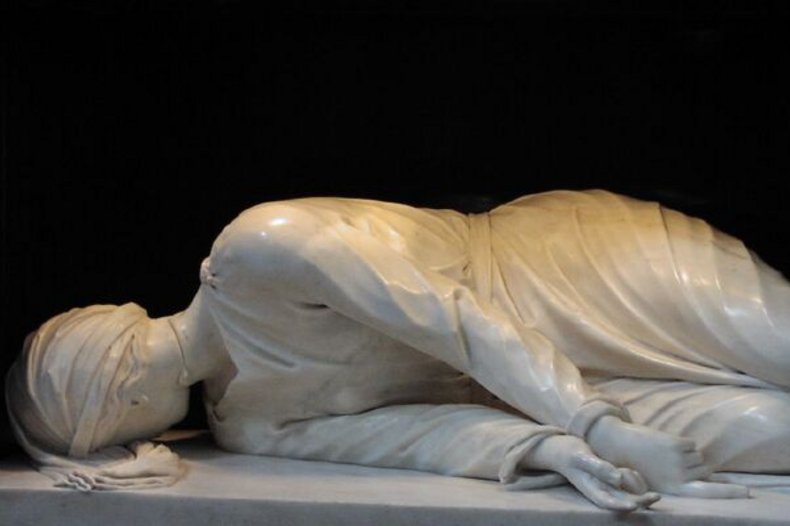
The Death of Saint Cecilia, sculpted by Stefano Maderno, Basilica of Saint Cecilia, Rome / © CC BY 2.0 Sébastien Bertrand, Flickr
Les raisons d'y croire :
- The body of Saint Cecilia was discovered twice, several centuries apart. Exposed to the air before being reburied, it was not preserved in a watertight lead coffin, which could have explained its preservation due to a lack of oxygen: in fact Saint Cecilia's body rests in a simple cypress coffin.
- Saint Cecilia's body is intact, neither mummified nor desiccated: it has remained supple, and she seems simply to be asleep. This state of preservation is inexplicable.
- At present, we only know of artificial method for the preservation of a body: plastinisation (injection under pressure of a plastic liquid that penetrates the tissues and hardens), or freezing... Obviously, these processes were not applied to the body of Cecilia, who died a martyr's death in the 3rd century.
- The discovery of Saint Cecilia's body has confirmed the authenticity of her martyrdom, recounted in Acts written in the 5th century, as several details of the account are perfectly consistent with what was observed inside the tomb (the fatal wound on her neck, the gold-woven dress and the cloths rolled around her feet).
Synthèse :
The life of Saint Cecilia
Cecilia came from a noble Roman family and was brought up in the Christian faith from the cradle. She carried the Gospel of Christ hidden over her chest at all times. She wore sackcloth next to her skin, fasted, and invoked the saints, angels, and virgins, asking them to guard her virginity. Her conversations with God and her prayers never ceased day or night. Under her father's authority, at the age of sixteen she was betrothed to a pagan youth called Valerian.
On her wedding day, before the consummation of her nuptials, she told her husband she had taken a vow of virginity and had an angel protecting her: Valerian would be punished if he violated her, or rewarded if he consented to respect her vow. Valerian asked to see the angel as proof, and Cecilia told him he would be able to see that angel if he went to Pope Urban (222-230) to be baptized. After following Cecilia's advice, he saw the angel standing beside her, bringing crowns of roses and lilies for the two of them.
When the persecutions against Christians resumed, the prefect of the city of Rome, Turcius Almachius, had the Christians' property seized. He had Valerian beheaded and ordered his wife Cecilia to appear before him and sacrifice to idols, or receive a death sentence. Almachius had Saint Cecilia brought to him and asked:
"What is your condition?
- I am a free and noble citizen.
- I'm asking you about religion. Do you not know what my power is?
- Your power is like a wineskin filled with wind; when a needle pierces it, all the stiffness that it had disappears, and all the stiffness that it seemed to have, collapses.
- Why are you talking so proudly?
- It is no pride; it is firmness.
- Leave aside your boldness and sacrifice to the gods.
- How have you become blind? The gods you speak of are merely only stones to us. Touch them instead, and learn by your sense of touch what you cannot manage to see with your sight."
Almachius then had her taken home and ordered that she be tortured by the extreme heat of a steam bath for a night and a day. He thought this would make the frail young girl yield - but Cecilia survived and did not even sweat. The next day, she still did not change her mind about remaining a Christian. When Almachius found out, he ordered her head to be cut off. A young executioner was assigned to the task and, moved and trembling, he struck her three times on the neck, but was unable to cut off her head. Because there was a law against hitting a victim four times, the executioner left Cecilia half-dead. During the three days that she survived, she gave everything she owned to the poor, and recommended all those she had converted (it is estimated that they amounted to 400 people) to Pope Urban: " I asked God," she told him, "for this three-day period in order to recommend them to your beatitude, and for you to consecrate this house of mine to make a church of it". Saint Urban then buried her body and consecrated her house, which became a church, as she had requested.
The martyrdom of Saint Cecilia called into question
Doubts about the authenticity of Saint Cecilia's martyrdom arose in the 17th century with the remarks of a Jansenist priest, Le Nain de Tillemont. In the 1970s, a period of hypercriticism, the various circumstances of her martyrdom, as well as the date and place, were called into question. Two main arguments were put forward:
- According to the records of her life (Acts) she was martyred by the prefect of Rome Almachius, during the reign of the emperor Severus Alexander. The latter was rather favourable to Christians, as his mother professed that religion. It is unlikely that any Christians were martyred during his reign, let alone in Rome, where the emperor lived.
- The date of writing of the Acts of Saint Cecilia seems late (fifth century), since these Acts contain allusions to the Trinitarian faith in terms that seem to post-date the Councils of Nicaea (325) and Constantinople (381).
However, these objections overlook an important argument, which sweeps them aside conclusively.
Search for the body of Saint Cecilia in 821
In the 9th century, the popes worked to recover the bodies of the martyrs buried in the catacombs and place them in churches dedicated to them. Oral tradition had it that she was buried in the cemetery of Saint Sixtus, but the search had so far been fruitless. Pope Saint Paschal, who had decided to explore the catacombs, resigned himself to believing public rumour that Cecilia's tomb had been plundered and destroyed by the pagan Lombards in the 6th century. But Saint Cecilia kept watch from heaven!
While the pontiff was presiding over a liturgical service in St Peter's Basilica, it is said that he had a luminous apparition of a young virgin of great beauty , who encouraged him to continue his research. Following this event, he set to work once again, exploring the labyrinth of galleries. At the junction of two paths, an unexplored tomb caught his eye. The simplicity of this sepulchre had preserved it from looters, who paid it no attention. Saint Pascal had a marble plaque removed, and the tomb of Saint Cecilia appeared: there she lay in her cypress coffin, her body completely intact. She was still dressed in the gold-woven robe in which Pope Urban had her buried, and the cloths that had been used to wipe her wounds were rolled together and laid at her feet.
The pope then proceeded to transfer the relics. Saint Cecilia's new resting place could only be her former palace, transformed into a basilica, where she had suffered martyrdom. The pope left the body of the saint in the cypress coffin where he had found it, in the same posture; he placed the whole in a white marble sarcophagus and placed it in an underground passage in the basilica of Saint Cecilia, with a circular wall enclosing the whole.
Second discovery of Saint Cecilia's body in 1599
The centuries passed, and only a vague memory remained of the place where her body lay, supposedly somewhere under the altar. It was Cardinal Sfondrati, titular of the Basilica of Santa Cecilia, who rediscovered the saint's body on 20 October 1599 while carrying out excavations.
After removing the marble plaque that closed the sarcophagus, the cardinal himself, in the presence of several other witnesses, removed the lid of the cypress arch and, after eight centuries of darkness and silence, Cecilia once again appeared before the eyes of the faithful in the majesty of her martyrdom, her body completely intact.It was an emotional moment. She was dressed in her gold embroidered dress, on which the stains of her blood were still visible, and at her feet lay the purple cloths of her martyrdom. Lying on her right side, her arms slumped in front of her body, she seemed to be asleep. Her neck still bore the marks of the wounds the sword had cut into it. The head, with a mysterious and touching inflection, was turned towards the back of the coffin. The body was completely intact, and the general pose, preserved in its grace and modesty by a unique miracle after so many centuries, showed Cécile breathing her last, lying on the bathroom floor.
When the body of Saint Cecilia was examined, it was plain that she was small in stature. This observation gives us a better understanding of two passages in the Acts of the Martyrs: the one in which, in order to answer Almachius' envoys, she climbed up onto a marble block near her, so that everyone could hear her; and the one in which, at the start of the interrogation, Almachius, addressing Saint Cecilia, begins by saying to her: "Who are you, maiden [puella]?"
All these details showed that we were indeed looking at the body of Saint Cecilia. Now, the description of the burial in the Acts of the Martyrdom of Saint Cecilia corresponds perfectly to the discovery made by Saint Paschal and then by Cardinal Sfondrati: in particular, the mortal wound on the neck, the gold-woven dress and the linen cloths rolled around the saint's feet. This conformity is striking proof of the authenticity of the Acts, in the sense that the fifth-century author must have used accounts written by contemporaries who witnessed the events.
Cecilia's body posture eternalised in marble
One of the greatest Roman sculptors of the early 17th century, Stefano Maderno, was commissioned by the cardinal to eternalise in marble Cecilia's posture in the tomb. This masterpiece still exists in the Basilica of Santa Cecilia in Trastevere. This twenty-four-year-old artist even wanted to reproduce the pose of the hands, which attested to the faith of the dying Cecilia. The fingers of her left hand are closed, except for the index finger. The first three fingers of her right hand are outstretched. Unity of the divine substance, trinity of the persons, such was also the meaning of the symbolic gesture that testified, after so many centuries, to the belief for which Saint Cecilia had shed her blood.
In 2015, Arnaud Dumouch, who holds a degree in religious studies, and Abbé Henri Ganty founded the Institut Docteur Angélique, which offers a complete online training programme in Catholic philosophy and theology, in line with Benedict XVI's hermeneutics of continuity
Au-delà des raisons d'y croire :
Saint Thérèse of Lisieux travelled to Rome at the age of fifteen, and was struck by the Italian custom of displaying the bodies of the saints in glass caskets. However, she was not convinced by the state of preservation of most of them "which resembled mummies". Towards the end of her life, she said: " I'd rather be reduced to powder than preserved like Saint Catherine of Bologna. I only know Saint Crispin who rose from the grave with honour."
In fact, there are other striking exceptions, such as Saint Cecilia, Saint Charbel, Saint Germaine de Pibrac... The miraculous phenomenon of intact and supple bodies is a sign of the protection the angels grant to a bodily envelope that sheltered a beautiful soul.
Aller plus loin :
Life of Saint Cecilia, Virgin and Martyr: A Biography and Her History in the Christian Church by Prosper Guéranger, Pantianos Classics (January 1, 1866)












